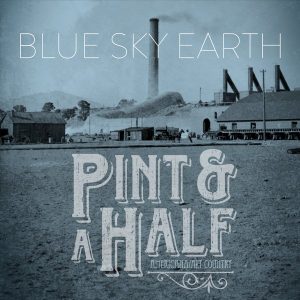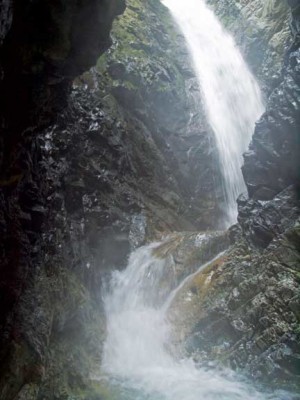by Forrest Whitman
I recently took a lovely walk up the old Denver and Rio Grande Western Railroad grade to the Orient mine in the northern San Luis Valley. It’s a spot anyone can visit on their own. Just stop at the Valley View Hot Springs office and sign in.
Graded in 1881, this narrow gauge line was once one of the busiest in the system. Carloads of ore went down to Villa Grove and the main valley line, sometimes six times a day. The day we hiked the old line (not many ties left), there was obviously only the memory of busy freight moving. It was a bit busy, though, with folks in various stages of dress or undress. That’s because the Valley View Hot Springs and surroundings are clothing optional.
The undress part led to one of the funniest comments I’ve heard. Upon arrival at the mine, I was walking behind two older ladies. The two official guides appeared wearing clipboards, tool belts and nothing else. One of the ladies said. “Been twenty years since I’ve seen one of those.” Her companion laughed, “You mean a tool belt?” Even with no nude guides, it’s a hike worth doing and one of those special places in Colorado Central land.
The rails from Pueblo to the Orient mine (by way of Salida, Poncha Junction and Villa Grove) were once vital in the Rio Grande system. The appetite for coal and iron ore, as well as limestone and dolomite, at the steel mills in Pueblo (“Little Pittsburgh”) was always huge. The Rio Grande furnished the raw material. At its height in around 1890, the town of Orient had a population of 400, a store, a school and other infrastructure. The iron ore produced may have been up to a third of an annual ration for the mills.
The road bed is still easily traceable today, at least in the upper portion. Lower down the bed crossed what is now open cattle country. It can be faintly seen from a trail head located at the end of a Saguache county road north of Road GG. Some enterprising drone owner is needed to trace it.
As we walked along I got an interested ear from a couple of my companions about the railroad history. The line was born into a railroad conflict and ended its life in 1923 amid conflict. Today it is hard to imagine how important railroad territories were and how hard they were fought over. When the D& RG made it to Aspen in 1887, the local poet wrote: “Then here’s to our Aspen, her youth and her age/ We welcome the railroad, say farewell to the stage/ And whatever our lot and wherever we be/ Here’s God Bless forever the D. and R. G.”
[InContentAdTwo]
My brief sketch of those conflicts included the efforts of president David Moffat to keep the line from falling into enemy hands, especially the Atchison Topeka and Santa Fe. This became a real possibility when J. J. Hagerman’s railroad, the Midland Railroad, was sold to the Santa Fe in 1890. Hagerman said, “This enables me, with one great whack, to get even with the Moffat-Wolcott-Chesman combination and pay them and their followers back for all the sneers, belittlement and other dirt they have heaped on me for the last four years.”
That also meant more pressure on the Rio Grande from the well funded Santa Fe surrogate which could compete for the Leadville traffic. It looked like the Rio Grande would have to abandon all but it’s main line (Pueblo to Leadville). The Orient spur was on the block. Still the Rio Grande persisted. The limestone mines at Monarch, the coal mines at Florence and the iron ore mines at Orient were an unbeatable combination. Moffat found some creditors. Eventually the other railroads had to back down.
Back in the present day, it was a perfect one for a short hike like that. All that rail history seemed close. I almost expected to see a smoke plume and one of those little Rio Grande narrow gauge engines ’round the curve.


